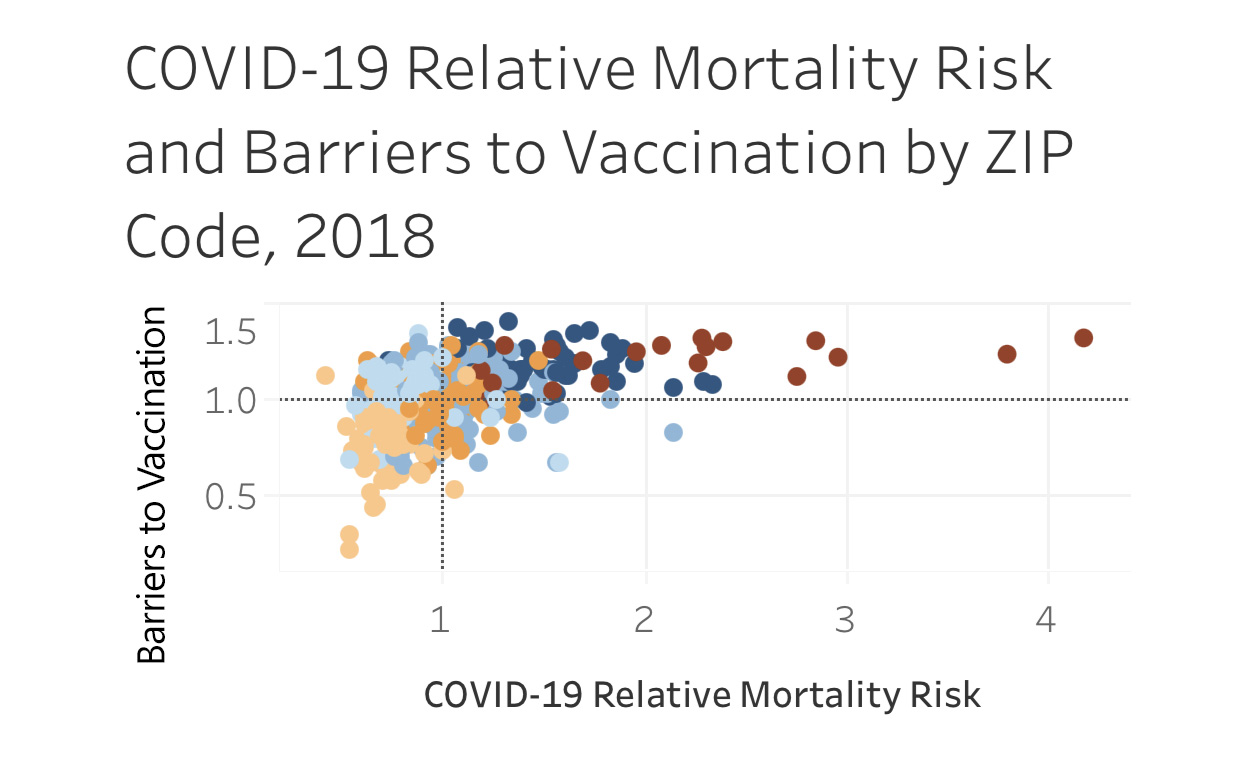 COVID-19 vaccination may be off to a slow start, but soon supply levels will rise and processes will be streamlined. Thoughtfully designed outreach with well-crafted messages will be of the utmost importance to ensure enough people are vaccinated to pave the way to population immunity and long-term protection from the disease.
COVID-19 vaccination may be off to a slow start, but soon supply levels will rise and processes will be streamlined. Thoughtfully designed outreach with well-crafted messages will be of the utmost importance to ensure enough people are vaccinated to pave the way to population immunity and long-term protection from the disease.
With this in mind, leaders of the UW Neighborhood Health Partnerships Program (NHP) partnered with the Wisconsin Collaborative for Healthcare Quality (WCHQ) and researchers at the UW Health Innovation Program (HIP) to develop a tool that will help community-level decision makers prioritize their COVID-19 vaccination outreach in Wisconsin communities. The tool, available at https://nhp.wisc.edu/covid-19/, estimates the relative risk of COVID-19 mortality and potential barriers to COVID-19 vaccination in many Wisconsin ZIP codes. Jessica Bonham-Werling, Director of NHP and Associate Director of Research Operations at HIP spearheaded the effort.
“While public health and health care communicators and marketers have been running flu vaccination campaigns for years, the urgency and importance of getting people vaccinated for COVID-19 will present a new challenge,” according to Bonham-Werling. “We have built a tool that will help target outreach and guide the development of messages that meet specific community needs to motivate people to get vaccinated as quickly as possible.”
The relative risk of COVID-19 mortality for each ZIP code was calculated using electronic health record data, voluntarily provided by over 20 Wisconsin health systems to WCHQ. The team produced a similar analysis earlier in the pandemic, but this update was created using a risk calculator that was recently published by Johns Hopkins University researchers in Nature Medicine based on all the knowledge that has been gained about COVID-19 risk factors. This calculator uses sociodemographic factors and information on pre-existing conditions to predict death from COVID-19.
“Wisconsin health systems and medical clinics are committed to protecting the people living in their communities, but we can’t help those we cannot reach,” according to WCHQ President and CEO Gabrielle Rude, Ph.D. “The fight to beat this virus requires new tools that not only identify areas of the state with people who are most at risk, but that also enable our health systems and public health professionals to develop outreach strategies that help us communicate with those who are hard to reach.”
Potential barriers to COVID-19 vaccination were calculated for each ZIP code using seasonal flu vaccination data from the Wisconsin Department of Public Health. There are many potential barriers to seasonal influenza vaccination, including rates of insurance coverage, access to health care and concern about vaccine safety and efficacy. While there are important distinctions between COVID-19 and seasonal flu vaccination, flu vaccination rates can help health professionals anticipate the challenges ahead and plan accordingly.
The tools were developed by NHP, a part of the UW Institute for Clinical and Translational Research, with funding provided by the Wisconsin Partnership Program.
Website: https://nhp.wisc.edu/
Contact: nhp@hip.wisc.edu
